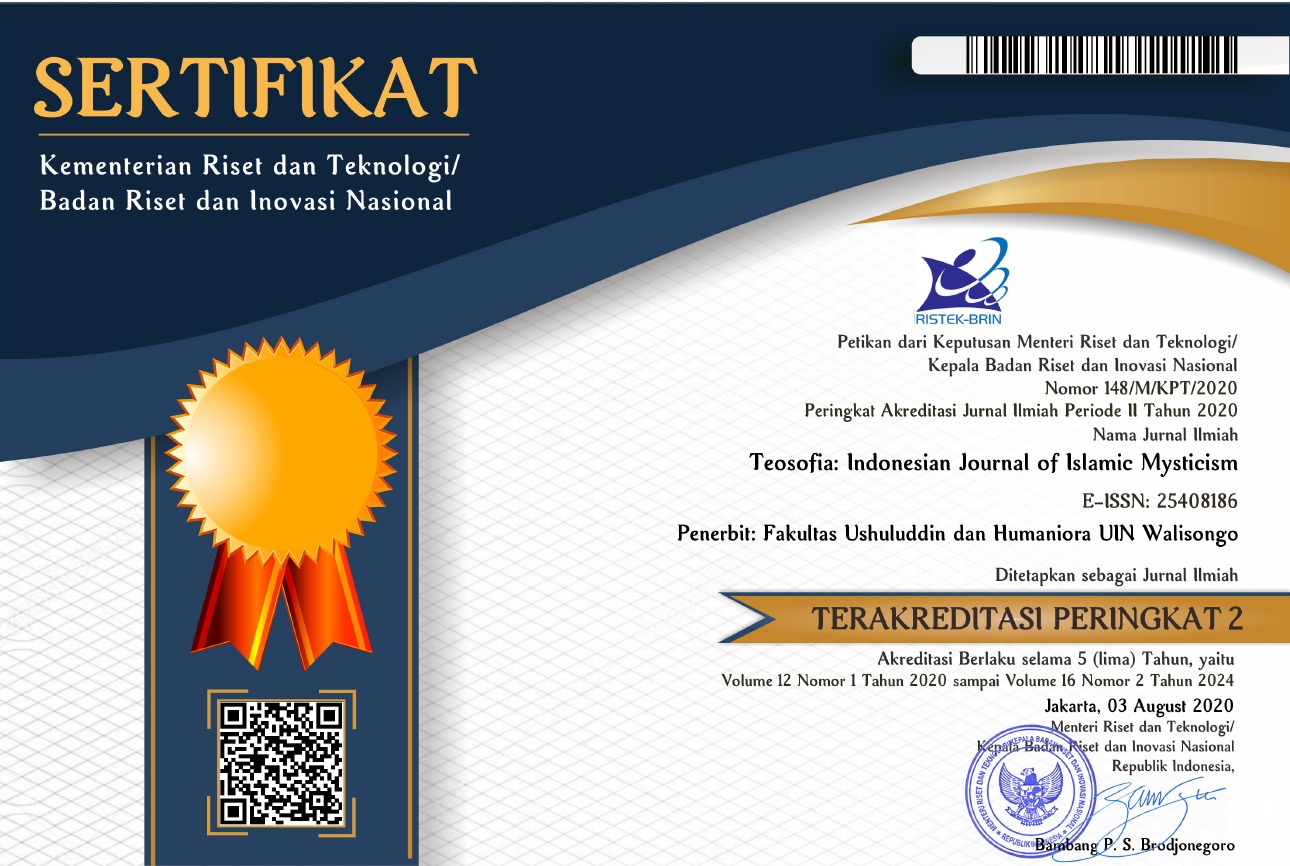HIJRAH AND POP CULTURE: HIJAB AND OTHER MUSLIM FASHIONS AMONG STUDENTS IN LOMBOK, WEST NUSA TENGGARA
DOI:
https://doi.org/10.21580/tos.v8i2.5305Keywords:
Pop culture, identity reconstruction, millennial Muslim, syar’i hijab, Hijrah.Abstract
The development of Islamic society in the millennial era in Indonesia today is quite dynamic. Education progress is one of the road graders for their vertical mobility. At the next level, this progress significantly led to a community that came to be known as the Muslim middle class, which offered features and dynamics of Islamic life that integrated with modernity. Further development, a millennial generation emerged that was triggered by the advancement of information-communication technology, along with the growth of new traditions known as Islamic popular culture, including the Hijrah trend. This study wants to look at the trends of Hijrah and the background of the reconstruction of the identity of millennial Muslim generations while at the same time able to blend in with modernity at state universities in Lombok. The paradigm used is a qualitative paradigm based on field research. The results of this study indicate that the Hijrah attribute that is trending among Lombok millennials is the wear of fashionable syar'i clothing such as veils with various models and colours, syar'i veils, fashionable headscarves, increased observance of worship, Islamic quotes on social media accounts, and lengthening the beard.Downloads
References
‘Abd al- Baqi, Muhammad Fu’ad. Mu’jam Mufahras li Alfaz Alquran. Beirūt: Dar al-Fikr, 1992. al-Asfahani, Al-Ragib. Mu’jam Mufradat al-Faz al-Qur’an. Beirūt: Dar al-Fikr, n.d.
Albany, Syaikh. Kitab jilbab al-Mar’ah al- Muslimah Fil Kitabi wa as-Sunnah, n.d.
Baswedan, F. Samudera Hikmah Dibalik Jilbab Muslimah. Jakarta: Pustaka Al-Inabah, 2013.
Dewi, Putri Aisyiyah Rachma, dan Awang Dharmawan. “Niqab Sebagai Fashion: Dialektik Konservatisme dan Budaya Populer.” Jurnal Scriptura 9, no. 1 (2019): 10. https://www.researchgate.net/publication/326805010, .
Ghafur, Wahyono Abdul. Tafsir Sosial. Yogyakarta: eLSAQ Press, 2005.
Hariyadi. “Islamic Popular Culture and The New Identities of Urban Muslim Young People in Indonesia:
The Case of Islamic Films and Islamic Self-Help Books.” The University of Western Australia, 2013.
Heryanto, Ariel. Identitas dan Kenikmatan : Politik Budaya Layar Indonesia. Jakarta: Gramedia, 2015.
———. “Kelas Menengah Indonesia: Tinjauan Kepustakaan.” Prisma 4 (1990): 68–71.
———. “Pop Culture and Competing Identities.” In Popular Culture In Indonesia: Fluid Identities in PostAuthoritarian Politics, diedit oleh Ariel Heryanto, 19–25. New York: Routledge, 2008.
Hughes, Helen, dan Berhanu Woldekidan. “The Emergence of the Middle Class in ASEAN Countries.” ASEAN Economic Bulletin 11, no. 2 (1994): 139–49.
Miles, Mathew B., dan A. Michaer Huberman. Anaalisis Data Kualitatif: Buku Sumber tentang Metodemetode Baru. Jakarta: UI-Press, 1992.
Nasional, Departemen Pendidikan. “Kamus Besar Bahasa Indonesia.” Balai Pustaka, 2007.
Nelf-Saluz, Claudia. Islamic Pop Culture in Indonesia: An Anthropological Field Study on Veiling Practices among Students of Gadjah Mada University of Yogyakarta. Bern: Institut für Sozialanthropologie Universität Bern, 2007.
“No Title,” n.d. http://pemudahijrah.com.
“No Title,” n.d. https://news.detik.com/kolom/d-3840983/fenomena-hijrah-di-kalangan-anak-muda .
“No Title,” n.d. https://wolipop.detik.com/hijab-update/d-3620452/cadar-poni-hingga-mata-elangmengenal-tipe-tipe-niqab-di-indonesia.
“No Title,” n.d. https://m.detik.com.
Rasyid, Lisa Aisyiah. “Problematika Hukum Cadar Dalam Islam: Sebuah Tinjauan Normatif-Historis.” Jurnal Ilmiah Al-Syir’ah 16, no. 1 (2018): 75. https://www.researchgate.net/publication/326805010.
Robison, Richard. “The Middle Class and the Bourgeoisie in Indonesia.” In The New Rich in Asia: Mobile Phones, McDonald’s and Middle Class Revolution. London & New York: Routledge, 1993.
Rofhani, Nani. “Budaya Urban Kelas Menengah.” Teosofi: Jurnal Tasawuf dan Pemikiran Islam 3, no. 1 (2013): 181-21/.
Shihab, Quraish. Tafsir al-Misbah. Volume 2. Jakarta: Lentera Hati, 2002.
Vatikiotis, Michael R. J. Political Change in Southeast Asia, Trimming the Banyan Tree. London & New York: Routledge, 1996.
Yunus, M. Kamus Arab-Indonesia. Jakarta: Haida Karya Agung, 2007.
Downloads
Published
How to Cite
Issue
Section
License
Copyright
The copyright of the received article shall be assigned to the journal as the publisher of the journal. The intended copyright includes the right to publish the article in various forms (including reprints). The journal maintains the publishing rights to the published articles. Therefore, the author must submit a statement of the Copyright Transfer Agreement.*)
Licensing

This work is licensed under a Creative Commons Attribution-ShareAlike 4.0 International License.
In line with the license, authors are allowed to share and adapt the material. In addition, the material must be given appropriate credit, provided with a link to the license, and indicated if changes were made. If authors remix, transform or build upon the material, authors must distribute their contributions under the same license as the original.
_______
*) Authors whose articles are accepted for publication will receive confirmation via email and send a Copyright Transfer Agreement.









